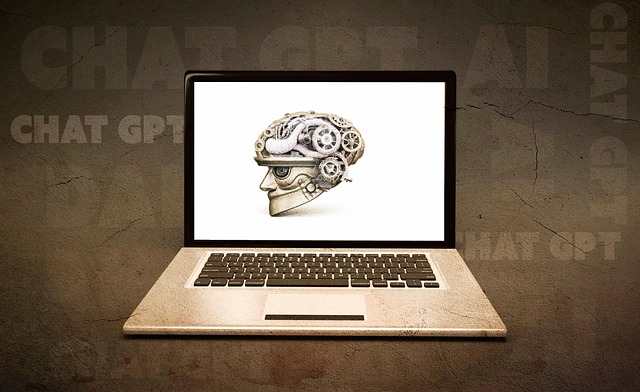An ecommerce ai chatbot is a powerful tool enhancing customer experience and boosting sales through real-time interactions, 24/7 availability, and data-driven insights. Success depends on selecting suitable technology, designing effective conversational flows, training with diverse data, seamless integration, rigorous testing, and continuous improvement to provide personalized support throughout the shopping process.
Creating an AI-powered chatbot for your ecommerce platform can significantly enhance customer engagement and drive sales. This comprehensive guide explores the entire process, from identifying specific ecommerce ai chatbot needs and applications to choosing the right technology stack, designing intuitive conversational flows, training models with relevant data, and integrating them seamlessly with existing ecommerce systems. We’ll also cover best practices for implementation, testing, and continuous improvement.
- Understanding Ecommerce AI Chatbot Needs and Applications
- Choosing the Right Technology Stack for Your Bot
- Designing Conversational Flows and User Personas
- Training and Integrating the Chatbot with Ecommerce Systems
- Implementing, Testing, and Continuously Improving Your Bot
Understanding ecommerce ai chatbot Needs and Applications

In the dynamic landscape of modern retail, an ecommerce AI chatbot can be a game-changer, enhancing customer experience and driving sales. These intelligent agents are designed to interact with shoppers in real-time, providing instant support and personalized recommendations. Key applications include product inquiries, order tracking, size/fit guidance, and cross-selling suggestions. By leveraging natural language processing (NLP) and machine learning algorithms, ecommerce AI chatbots can understand complex queries and provide accurate, contextually relevant responses.
The integration of an ecommerce AI chatbot offers numerous benefits, such as 24/7 availability, reduced response times, and the ability to handle a high volume of customer interactions simultaneously. This not only improves customer satisfaction but also allows human agents to focus on more complex issues, fostering a more efficient and effective support system. Moreover, these chatbots can collect valuable data on customer preferences and behavior, enabling businesses to refine their offerings and marketing strategies accordingly.
Choosing the Right Technology Stack for Your Bot

When creating an Ecommerce AI Chatbot, selecting the appropriate technology stack is a pivotal decision that can significantly impact its performance and effectiveness. The right tools and platforms will enable seamless integration with your existing systems, such as customer relationship management (CRM) software and e-commerce platforms, ensuring a smooth user experience. Look for frameworks and libraries that offer pre-built functionalities like natural language processing (NLP), machine learning (ML), and dialog management, which are essential for understanding user queries and generating contextually relevant responses.
Consider the scalability and flexibility of your chosen stack, especially if you anticipate rapid growth in user base or interaction volume. Cloud-based solutions often provide on-demand resources, making them ideal for handling varying workloads without compromising performance. Additionally, ensure compatibility with industry-specific standards and regulations, particularly when dealing with sensitive customer data, as is common in the Ecommerce domain.
Designing Conversational Flows and User Personas

Designing conversational flows is a crucial step in building an effective eCommerce AI chatbot. It involves creating a structured dialogue that guides users through their journey, from initial inquiry to successful purchase or resolution. By mapping out potential user paths and responses, developers can ensure the chatbot provides relevant, contextually appropriate assistance at each stage. User personas play a significant role here; understanding your target audience’s preferences, pain points, and communication styles allows for crafting more personalized and engaging conversations.
For instance, in an eCommerce setting, you might create separate user personas for browsers, casual shoppers, and frequent buyers. Each persona would have distinct needs and interaction patterns. The chatbot flow could then be designed to cater to these variations, offering tailored product recommendations or support based on the user’s role, enhancing their overall experience.
Training and Integrating the Chatbot with Ecommerce Systems

Once your AI chatbot is developed, training it to understand and respond to customer inquiries effectively is crucial for its success in an ecommerce setting. This involves feeding the chatbot a vast amount of data related to products, services, and common customer questions. The more diverse and relevant this dataset is, the better equipped the chatbot will be to handle various conversations. You can use existing customer support tickets, product descriptions, and FAQs as training material. Advanced machine learning techniques allow the chatbot to learn from these interactions, improving its accuracy over time.
Integrating your ecommerce AI chatbot with your existing systems is a seamless process. It involves connecting the chatbot to your database, allowing it to access product information, inventory levels, and customer data securely. This integration enables the chatbot to provide personalized recommendations, offer real-time support, and even facilitate transactions. By syncing with your commerce platform, the chatbot can assist customers in finding products, answering queries, and guiding them through the checkout process, enhancing the overall shopping experience.
Implementing, Testing, and Continuously Improving Your Bot

After creating your ecommerce AI chatbot, implementing and testing are crucial steps in its development lifecycle. Initially, integrate the bot seamlessly into your website or platform, ensuring it’s accessible to users with minimal effort. Test its functionality across various scenarios, including common user queries, edge cases, and potential technical glitches. This rigorous testing phase helps identify and fix issues before launching, guaranteeing a smooth user experience.
Continuous improvement is the key to keeping your ecommerce AI chatbot effective and relevant. Monitor its performance using analytics tools, tracking user interactions, and gathering feedback. Regularly update and refine the bot’s knowledge base, adding new products, pricing details, and frequently asked questions. Additionally, adapt to seasonal trends, promotions, or product launches by adjusting conversation flows and personalizing recommendations for a dynamic and engaging customer experience.
An ecommerce AI chatbot is a powerful tool that can transform your online store into a dynamic, customer-centric experience. By understanding specific needs, selecting the right technology, designing thoughtful conversations, and continuously refining your bot’s performance, you can create an engaging assistant that enhances user interactions, drives sales, and provides valuable insights into customer behavior. Embrace the potential of AI to future-proof your ecommerce platform and stay ahead in a competitive market.
